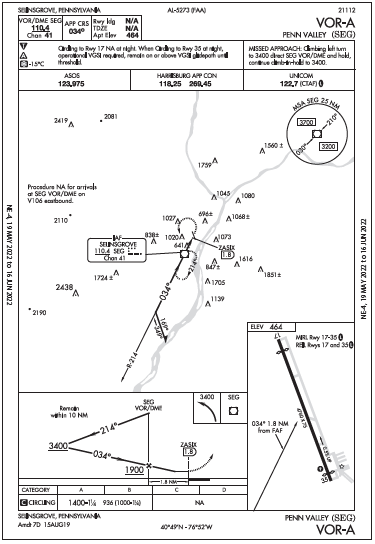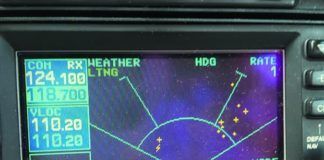Searching For Nine
I just finished reading Bob Teter’s “Future Automation” in the July issue. Then, I went to the airport and twisted the knob on my transponder to squawk 0395, as Bob suggested in the article. For some reason, it wouldn’t let me.
Oh, I get it; transponder codes are in octal! Ya know, like base 8, only using the digits 0 through 7. There ain’t no eight or nine.
Now, did Bob do that to test us, or did he have a senior moment?
Fred Simonds
Juno Beach, Florida
Okay. That was clearly a brain fade by 1) the author, 2) the editor, and 3) the proof reader. They’ve all been suitably spanked and instructed to write “Transponders have 0, 1, 2, 3, 4, 5, 6, and 7, but no 8 and no 9” on the board 500 times.
Operationally, you can’t enter any individual numbers greater than seven. The underlying technical reason is the numbers are encoded for transmission as three-bit binary numbers, with seven being the largest number that can be represented with three binary digits.
Some Can’t Cancel
In July Readback, “Just Cancel,” I agree with the assessment of the author (Kent) and the editor (Frank) on the proper methodology of cancelling an IFR flight plan at a non-towered airport. Cancelling in VMC when the airport is in sight is the best way to speed up additional IFR arrivals and departures from those fields as only one IFR flight can take off or land at one time—in addition to the obvious benefit of more efficient communications.
The problem seems to be mostly with Part 135 operations in my region. Many of them are required them to land before cancelling even if the weather is severe clear at the arriving airport. It would be nice to see that policy change.
Brian Turrisi CFII
Hilton Head, SC
That could be from low-time pilots. The mindset of many small freight carriers and 135 operators could be that it’s simply safer to require them to stay on IFR. Obviously, that’s not the case, but…
Where Is That NOTAM?
As you pointed out in the July 2022 Readback, the FAA issued a NOTAM for the VOR-A approach at KSEG to provide missing timing info from the FAF to the MAP. The NOTAM has an expiration of 3 February 2024.
I wonder what the FAA’s criteria are for publishing a corrected chart and not relying on a NOTAM for an extended time period. For example, the published missed approach procedure at KBML had a serious error, corrected by a NOTAM, that could easily have caused a CFIT event if the NOTAM was overlooked. (This KBML error was the topic of a Pilot Workshops scenario.)
The NOTAM ran a full two years, with the correct procedure just published in June. If even that chart error didn’t receive priority for a published correction then this KSEG NOTAM seems destined to run its full term.
Bill Ayer
Bellevue, Washington
Sadly, you’re probably right, Bill. We suspect the delay in corrected charting is a combination of staffing, workload, and the bulk of the approval process. Because of that, and our experiences answering questions like this, we now strongly advise a close look at NOTAMs when initially planning a flight. You’d be amazed what you find there—it runs the gamut from procedures NA to changed mins, and other life-threatening differences.
What’s Up With KARR?
In the recent July 2022 article “We Still Need Navaids,” I came across what I hope is just a typo in the first sentence under the heading, Circle vs. “Circle.” I hope I’m just not getting dense, as my wife has suspected for years, but that the “61 degrees offset from Runway 36’s official magnetic heading of 001 degrees” can’t be right. It has to be 31 degrees, not 61.
Please let me know what you think. I smell “typo” but I could be missing something. And, my apologies to Elaine if my wife is right. Again.
Jim Denike
Newtown, Connecticut
Looks like we ran out of fingers on which to count and goofed. So, the 61-degree statement is incorrect and is actually 31 degrees as you thought. In this case at least, you can tell your wife you got it right.
Were it not for articles like this one, I might not appreciate IFR as much as I do. So, thank you for “We Still Need Navaids” in the July 2022 IFR Clinic. It certainly stimulated the mind.
Please consider a couple questions: I see in your article how the VOR RWY 36 approach started, but I’m left wide-open-mouthed wondering. Why on Earth does the FAA leave this incorrectly labeled “VOR RWY 36” since 1988 when a one-character correction would fix that? Doesn’t the FAA require perfection from pilots’ and manufacturers’ documentation? So, why has this approach persisted in this perplexing form for three and a half decades? I feel confused in my armchair reading about this; I can’t imagine the utter bewilderment for a transient pilot trying to land at Aurora.
Next, are dual VOR receivers really required to fly IFR and fly this approach, or could a fast-fingered pilot fly this approach with a single VOR? (I recall the good ol’ days, flying with a single VOR.) Are dual VORs a minimum IFR equipment list requirement … whenever GPS is unavailable?
As an avid fan of IFR Magazine for a couple of decades I think you for the great article.
Truman Robin Cole, III
[Location Withheld]

Thanks for your kind words, Truman. To your questions:
Once upon a time, Aurora had a Runway 36 but did not have a Runway 33, and the VOR Runway 36 approach was born. Okay, that’s fine. But, with the creation of Runway 33, the approach remained … and remained … and remained. We agree that the approach should be republished to offer straight in to Runway 33. Why it hasn’t been is beyond us.
No, there is no general requirement for dual VOR receivers, although some approaches (surprisingly, not this one) do state that as a requirement. But, look closely at this approach. Say you’re flying it as published (ignoring the whole Runway 33 kerfuffle). You’re going to have one VOR tuned to Joliet on the 330 radial for the final. Yes, you could use that one receiver and quickly switch back and forth to the DuPage VOR and radial 205 to identify COAST for lower minimums. But, what if you miss? You’d then have to stay on final (JOT R-330) until past COAST (at DPA R-205), then go outbound on the DuPage 225 radial to SWETT at the Joliet 314 radial. Even with two VOR receivers, you’d still need to exercise those fast-finger skills you mentioned. With but one VOR receiver it’d take not only fast fingering, but an amazing situational awareness as you’ll be switching back and forth between two VORs, each using two different radials for different portions of the approach. Nah, we’d prefer an actual GPS approach with no tuning, no twisting, no timing…





